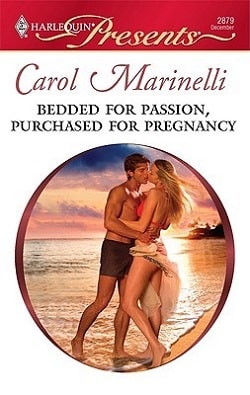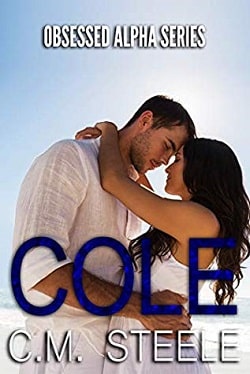I told her about the shotgun slaying of Dallas Klein in Opa-Locka, Florida, years ago. Through my second-story window I could see rain hitting on the tops of the crypts in St. Peter’s Cemetery.
“You were there when he died?” she said.
“Yeah,” I said, my voice catching slightly.
“Wrap up our end on this and give it to the Feds. You copy on that?”
“Absolutely,” I replied.
I DROVE HOME at 5 p.m. and parked my pickup truck under the porte cochere attached to the shotgun house where Molly and I live in what is called the historical district of New Iberia. Our home is a modest one compared to the Victorian and antebellum structures that define most of East Main, but nonetheless it is a beautiful old place, built of cypress and oak, long and square in shape, like a boxcar, with high ceilings and windows, a small gallery and peaked tin roof, and ventilated green shutters that you can latch over the glass during hurricane season.
The flower beds are planted with azaleas, lilies, hibiscus, philodendron, and rosebushes in the sun and caladiums and hydrangeas in the shade. The yard is over an acre in size and covered with pecan trees, slash pine, and live oaks. The back of the property slopes down to the Teche, and late at night barges and tugboats with green and red running lights drone heavily through the drawbridge at Burke Street on their way to Morgan City. At early dawn there is often ground fog in the trees and on the bayou, and inside it you can sometimes hear a gator flopping or ducks wimpling in the shallows.
Our elderly three-legged pet coon, named Tripod, lives in a hutch in the backyard. His sidekick is an unneutered male cat by the name of Snuggs. Snuggs has a neck like a fireplug and a body that ripples with muscle when he walks. He wears his chewed ears and the pink scars inside his short white hair like badges of honor. The only dogs he allows in the yard are those who have received Tripod’s stamp of approval.
Our next-door neighbor is Miss Ellen Deschamps, an eighty-three-year-old graduate of Millsaps College who feeds every stray cat in New Iberia. She despises people who litter and once hit a man in the head with a bag of carrots for dumping his automobile’s ashtray in the Winn-Dixie parking lot. She also considers Snuggs a profligate interloper but feeds him just the same. Early in the morning I can see Miss Ellen through the bamboo border on our property, feeding her cats or at work in her garden, the big pockets of her apron stuffed with tools and packets of seed. The image of Miss Ellen bending to her tasks on a daily basis, indifferent to the role of eccentric imposed on her by others, always makes me feel better about the world.
Our little spot on East Main is a fine place to live, and the woman I share it with is a person who lays no claim on courage or devotion or resilience but possesses all those virtues in exceptional fashion without ever being conscious of them. Before our marriage, her name was Sister Molly Boyle. In her religious life she had worked in a Maryknoll mission in Guatemala where the Indians were massacred by the army as an object lesson to leftist rebels. Later, she organized cane workers in St. Mary Parish, here in southwest Louisiana, and built homes for the poor. Then she left the religious order to which she belonged a
nd married an alcoholic homicide detective with a long history of violence, and took up residence here, on Bayou Teche, along with Tripod and Snuggs and my adopted daughter, Alafair, who was studying psychology and English at Reed College in Portland.
“What’s happenin’, trooper?” she said when I walked into the kitchen.
She was washing and breaking up lettuce under the faucet, tearing it into chunks with her fingers. Her hair was dark red and cut short, and there was a spray of sun freckles on her arms, neck, and shoulders. Her father had been a retired United States Army line sergeant and later a police officer in Port Arthur, Texas. She spoke of him often and fondly, and I suspected some of her populist, blue-collar attitudes and her ability to do many things with her hands came from him.
I touched her neck and the tips of her hair, then squeezed her shoulders. Molly’s hair was the same shade of red as the dead girl’s by the mill, and I tried to push the image of the wound in the girl’s forehead out of my mind. Molly turned around and looked at me. Her eyes were wide-set and bold and always hard to stare down. “Something happen today?” she said.
“There was a homicide up by the mill. A girl by the name of Yvonne Darbonne. She was about to start UL,” I said.
“You knew her?”
“I know her dad. He lost his farm a few years back.”
“She was murdered?”
“It looks like a suicide, but—”
“What?”
“Nothing. Let me help with supper,” I said, and began taking dishes down from the cabinet.
By sunset the rain had stopped and I walked by myself down to the bayou’s edge. In the west, the sky was the soft pink of a flamingo’s wing, the air heavy and damp and clean-smelling. Water dripped from the trees onto the bayou’s surface, creating a chain of rings that floated away in the current. But the mildness of the evening and the dripping sound of rainwater onto the bayou could not free me from the image of Yvonne Darbonne curled in the dirt, the red hair that had fallen over her wound tousled by the wind.
Suicides fall into categories. Some victims probably manufacture an internal psychodrama as a way of asking for help, then drift too far across the line. The clinically depressed do it in closed garages or with pills and booze while they listen to Boléro or “Clair de lune.” Jumpers find audiences and sail out among the stars. Some fantasize a script in which they transcend their own deaths. In their imagination they watch from above while others find their bodies in horror and are trapped inside a legacy of guilt and grief for the rest of their lives.
But the ones who do it with high-powered firearms in the mouth or razors high up on the forearms, not on the wrists, are often filled with unrelieved rage at themselves. Female suicides are seldom if ever found in the last category.
Was Cesaire Darbonne’s information correct about his daughter? Did she not drink or smoke? Had she always been happy? What could cause someone that young and beautiful and full of promise to fire a bullet into the center of her forehead? Or had someone else been at the scene also?
THE NEXT DAY our coroner, Koko Hebert, lumbered into my office. Koko was one of the saddest-looking human beings I had ever known. His body was shaped like a soft-sided pyramid. His breath wheezed in his chest. He stank of nicotine and beer sweat, and sometimes trailed an odor that was worse, one that made me think of a mortuary in Vietnam after the power had failed.
Koko’s cynicism and anger were palpable. But his son had been killed in Iraq, and I had come to believe that his daily assault on the sensibilities of others was his own strange way of asking for help.
The grass was green and the sun was shining outside my window, but when Koko spread his buttocks on a chair in front of my desk, the sun might just as well have gone into eclipse. He took a huge drag off his cigarette, his brow furrowing as though his inhalation of cancer-causing chemicals were a moment of metaphysical importance.
“Would you not smoke in here?” I said.
He took a coffee cup off my desk and ground out his cigarette in it. “You want the post on the Darbonne girl or you want to tell me you don’t have bad habits?” he asked.















